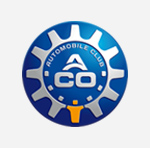A pioneer in automotive development since 1906, the ACO launched a two-pronged initiative to promote hydrogen-fuelled transport in 2018. Alongside the MissionH24 project, which will see hydrogen-electric vehicles compete in the 24 Hours of Le Mans as of 2024, the club is encouraging zero-emission mobility on a local level. An essential component in the local scheme, the hydrogen station was built by the ACO with support from local authorities, whose leaders are convinced of the potential of the gas as a fuel for transport. Le Mans is proud to be home to a hydrogen service station.
Pierre Fillon, President of the Automobile Club de l’Ouest, organiser of the 24 Hours of Le Mans: "For the good of our planet, today’s transport projects are necessarily zero-carbon and responsible. Hydrogen can be used on all road networks, on short or long journeys, in cars, lorries and buses and also for rail, sea and air transport. Not only is it versatile, it is emission free. We needed a filling station to develop hydrogen use locally. We couldn’t promote hydrogen without one. Our club plays a real role in the quest for zero-carbon mobility. We are glad to be able to count on the support and the vitality of our local authorities, who take their environmental responsibilities seriously. I would like to thank the town councils, local authorities, the chamber of commerce and our long-standing supplier, Total, for their help. This filling station is the result of teamwork."
Stéphane Le Foll, Mayor of Le Mans and President of Le Mans Métropole: "A filling station in Le Mans shows we can decentralise production and at the same time, render the energy easily available to all users. If you are aiming for zero-carbon, then hydrogen is a must."
Christelle Morançais, President of the Pays de la Loire regional council: "As President of the region, I am proud to see my home city open the region’s second hydrogen filling station. Thanks to the collective response from local authorities to the climate emergency, this station lays the foundations for a hydrogen ecosystem in and around Le Mans. Concerning energy transition, my aim is clear: I support a positive approach to ecology, one that initiates projects and progress that get everyone on board. Collective responsibility calls for a collective response. The first hydrogen filling station is therefore a major step, a springboard for clean energy within the Pays de la Loire."
Dominique Le Mèner, President of Sarthe local council, and President of the Syndicat Mixte des 24 Heures (consortium of local authorities): "Sustainable green energy that creates jobs is good news for La Sarthe. This hydrogen filling station is further proof that our département is a leader in technological innovation for mobility. It is the cornerstone of a platform that will provide the local public transport network with fuel. As ever, Sarthe is playing an active role in protecting the environment and leading the energy transition."
Philippe Callejon, Total Marketing France Mobility and New Energies Director: "Total supports the goal of reaching zero-carbon by 2050. Our venture with the ACO is a ground-breaking one. Together, we have already developed a mobile filling station for trackside use during races and we are well on the way to introducing a hydrogen category at the 24 Hours of Le Mans in 2024. We at Total are proud to have contributed to the hydrogen infrastructure in this city."
About the Le Mans hydrogen filling station
- Hydrogen is produced centrally and then stored in cylinder racks at 200 bar. Each rack contains around 12 kg of hydrogen.
- The cylinders are delivered to the station and constitute its low-pressure stock. There are two independent lines of five racks each.
- The hydrogen is compressed to 420 bar, which constitutes the high-pressure stock.
- When a vehicle fills up at the station, its tank is filled with compressed hydrogen (up to 350 bar) with a simple pressure cascade. To the user, it is very much like filling up at a conventional fuel station.
- When a rack is empty, a new order is placed automatically.
- The station is under constant surveillance and the operator warned if an issue arises.
- The station can provide 20 kg of hydrogen in 30 minutes. Enough for a SAFRA bus fitted with a fuel cell to cover 300 km, with mere water for emissions.
- The project’s partners are ARTELIA and COLAS for the civil engineering, McPHY for the compression equipment and LINDE for the work on the hydrogen storage and supply facility.
